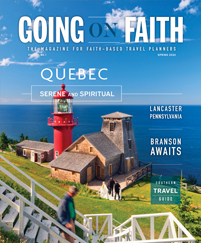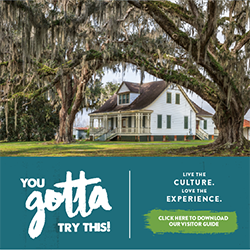Dead Sea Scrolls at the California Science Center
Los Angeles
The largest Dead Sea Scroll exhibit to be taken outside of Israel is currently on display in the Golden State at the California Science Center in Los Angeles. This special exhibit features more than 600 ancient artifacts, most of which were extracted from caves in a milestone 1947 archaeological discovery. Each item is at least 2,000 years old.
The scrolls represent pieces of the manuscripts for the biblical books of Exodus, Deuteronomy, Psalms and Job.
Groups may wonder how such an acclaimed exhibit ended up at a science museum instead of a museum dedicated to history, which would seem to be a more natural venue. Diane Perlov, the museum’s senior vice president for exhibits, said that the scrolls’ extraction, translation and preservation were as much a work of science as of historical preservation.
“This exhibit is a demonstration of how science can be used to solve an historical puzzle: how to make sense of the tens of thousands of small scroll fragments found in the caves above the Dead Sea,” said Perlov. She said through the use of spectral imagery, carbon 14 dating, DNA analysis and other tools, scientists have been able to identify and read the ancient fragments, assemble and attach the pieces without damaging them, and preserve them for the next 2,000 years.
Guests at the museum are invited to join in the scientific process and discover what the work of preserving these ancient texts entailed.
“For instance, guests can match up pottery fragments and be introduced to how [the scroll] fragments were matched up and assembled,” said Perlov.
To accompany the exhibit, filmmakers worked in conjunction with the museum to tape the first-ever three-dimensional aerial video footage of the old city of Jerusalem, along with other areas in Israel, all of which can be experienced in high definition at the museum through the movie experience “Jerusalem 3D,” narrated by Benedict Cumberbatch.
www.californiasciencecenter.org
First African Baptist Church of Savannah
Savannah, Georgia
Few buildings left standing in the United States can claim to be National Historic Landmarks; even fewer are still being used for their original purpose. Not only are both these things true about the First African Baptist Church of Savannah in Savannah, Georgia, but the building has played numerous other historically significant roles throughout its lifetime, making it both a religious and a historical pilgrimage destination for groups.
Built in 1859 for a congregation comprising mostly black slaves, the church features original pews, lights and stained-glass windows that contain pieces of the past.
Perhaps one of the greatest roles the church has played was as a stop on the Underground Railroad. Evidence of this period can still be seen on the ceiling of the church, which is constructed in the pattern of a “nine patch quilt.” This design signaled that the church was a safe house for runaways and also served as a map pointing escaped slaves on their ways north to freedom.
“During the time, it was extremely secretive that it was a safe house; the only way to know it was a stop was if you had a friend or family member who told you about it,” said Erika Wade, director of tourism at First African Baptist Church of Savannah.
And though the four-foot tall crawl space used to hide the slaves beneath the church is still intact today, the original entrance to the space still remains unknown.
The church also bears literal scars of the horror of slavery. Slaves constructed the church pews, and at the ends of each of them, there is engrained cursive writing that is believed to be a dialect known as “Cursive Hebrew” that slaves brought with them to the New World from Africa.
Today, the church is open to the public for tours. It holds regular worship services, too, on Thursdays and Sundays — services that Wade said “are becoming more and more multiracial.” Though the congregation is still predominantly African-American, she said, “we have visitors from different states and countries every weekend.”
World Methodist Museum
Lake Junaluska, North Carolina
Those familiar with the Methodist tradition will know that the movement is inseparable from its hero and leader, John Wesley. And no other museum in the country contains more John Wesley memorabilia, affectionately called “Wesleyana,” than the World Methodist Museum, located in the quiet mountains of North Carolina’s Blue Ridge National Heritage Area.
Portraits of Methodism’s founding fathers, Wesleyan pottery, unique manuscripts to Wesley’s sermons, books, letters and even his original traveling pulpit are on display under its roof.
Fewer people are aware of John Wesley’s younger brother, Charles Wesley, who was a poet and hymn writer; but the younger Wesley was also a significant contributor to the American Methodist movement. More than 9,000 hymns written by Charles Wesley live on in Methodist hymnbooks around the world. Many hymnbooks from the time of Charles’ writing are on display at the museum, along with a portable pump organ he regularly used while traveling with his brother.
For those outside of the Methodist tradition, museum director Jackie Bolden said the museum offers an enlightening perspective on the period known as the Great Awakening, which was the spread of the European Protestant movement across the United States, as well as humanitarian ideals put forth by the Wesleys.
“The museum is all about humans helping other humans — that was a core belief of Wesley’s, that we were here on earth to help our fellow man,” she said. “I think especially in this day and age, and the troubles we are dealing with, everyone could use that reminder.”









